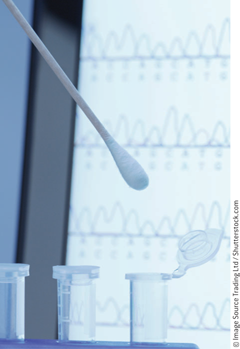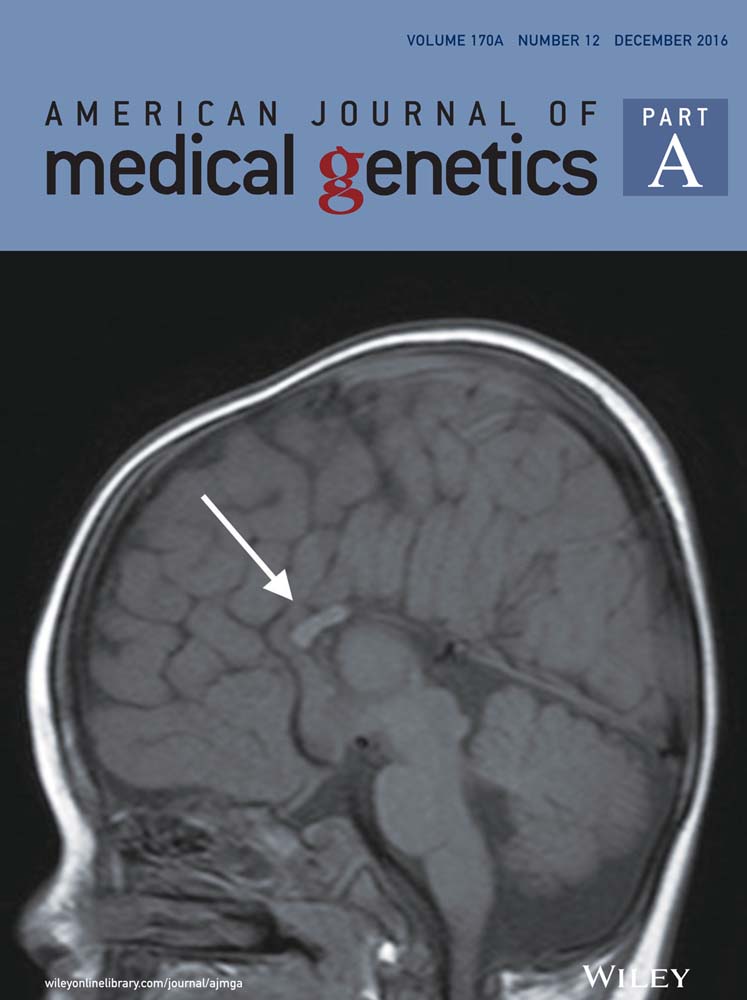New Fragile X tests may improve research on the disorder
Tests' ability to provide detailed information about genetic mutations and lower cost raise hope for clinical use and newborn screening
National Institutes of Health (NIH) researchers have developed a set of assays for Fragile X-related disorders that are affordable enough for routine research use and may lead to new clinically useful diagnostic tests.
Patients with Fragile X syndrome (FXS), the most common heritable cause of intellectual disability and a frequent cause of autism, have more than 200 copies of the sequence CGG at one end of their FMR1 genes. Such alleles, known as full-mutation alleles, are almost always switched off. People with 55 to 200 repeats, known as premutation alleles, are at risk for Fragile X-associated primary ovarian insufficiency and Fragile X-associated tremor/ataxia syndrome. A woman with a premutation allele is also at risk of having a child with FXS. Her risk is directly related to her number of repeats of CGG.
The researchers describe five new assays that can be used in blood or saliva. The tests can amplify alleles with as many as 1,000 repeats even in samples from patients who have a mixture of cells with different repeat numbers. The tests' turnaround time, 24 hours, is much faster than commonly used Southern blot tests and comparable to polymerase chain reaction tests used by commercial labs. The tests can determine CGG repeat size and methylation status, can find AGG interruptions that affect the risk of transmission of FXS, and can detect even small changes in DNA methylation.
The group of tests could be useful in the search for new drugs to reverse the effects of repeat expansion, the researchers write (Hayward et al, 2016).
For now, the assays are appropriate only for use in basic research. The authors plan to use them for determining CGG-repeat number and methylation status in studies of early embryonic development and the effect of repeat length and methylation status on gene expression and differentiation, says Karen Usdin, PhD, Senior Investigator in the Gene Structure and Disease Section of the Laboratory of Cell and Molecular Biology at the NIH Intramural Research Program.
“We wanted something for us to use with our cell lines to help us understand how genes are switched on and off,” says Dr. Usdin. “Repeats are unstable, and this can lead to methylation changes in cell lines. So when working with these cells, it is really important to track these parameters. In the future, our assays may be the basis of a more affordable clinical test.”
The Study
Although a previous test developed by Dr. Usdin's group was able to detect repeat numbers in the premutation range, the assays in the current study amplified alleles, even methylated ones, in the high full-mutation range. In addition to detecting repeat number, the assays show the number and position of any AGG interruptions and their methylation status.
The researchers tested the five assays on more than 31 samples, including some very challenging cases. “We tried to cover the range of examples seen in the clinic,” says Dr. Usdin.
The methylation-sensitive repeat assay allows correlation of specific alleles with their methylation status, useful information especially for females with skewed X chromosome inactivation or in unusual cases with two methylated premutation alleles and multiple unmethylated full mutations, researchers note.
The quantitative methylation assay was able to clearly distinguish between normal males and females; normal, premutation, and full-mutation alleles; and cell lines that had been treated with demethylating agents and those that had not been treated. “The assay may help us answer basic research questions about mechanisms involved in gene silencing and allow us to identify epigenetic modifiers that reactivate silenced full-mutation alleles,” says Dr. Usdin.

Newly developed assays for Fragile X syndrome that can be used on blood or saliva samples can turn around results in 24 hours.
Reaction
“This is a big deal,” says Randi J. Hagerman, MD, Medical Director of the University of California (UC) Davis MIND Institute and Distinguished Professor and Endowed Chair in Fragile X Research in the Department of Pediatrics at the UC Davis School of Medicine in Sacramento. The new assays are better than current research and clinical assays because they adequately identify premutations, full mutations, and those in a gray zone between the two, she explains.
The methylation information is particularly useful, Dr. Hagerman adds. “There's variation of methylation in premutations and full mutations,” she says. “Methylation can affect behavior, so the assays offer a detailed way to look at all of that. They may be more accurate for molecular-clinical correlation.”
Although the authors are not promoting their tests for clinical use, the assays give much more information than the tests typically used by pediatric specialists, who usually evaluate children with Fragile X-related disorders first, notes Walter E. Kaufmann, MD, Ravenel Boykin Curry Chair in Genetic Therapeutics and Director of the Center for Translational Research at Greenwood Genetic Center in Greenwood, South Carolina. Current assays that test for causes of developmental conditions do not include FXS because analyzing CGG expansion is such a complex endeavor. “We need a customized approach, and that is reflected in this paper,” Dr. Kaufmann says.
The repeat number assay is an improvement over a Southern blot, which does not accurately count CGG repeats in patients whose cells harbor different numbers of them, he notes. An ability to detect AGG interruptions will also provide useful information regarding the likelihood of a patient passing expanded repeats to offspring, he adds.
At a cost of about $5 each, these tests are far less expensive than the PCR and Southern blot tests now used by clinical labs, which cost more than $200 each, Dr. Hagerman points out.
The information delivered by these assays would be useful for newborn screening, which Dr. Kaufmann says he believes is the only way to reduce the age of FXS diagnosis, which typically happens at about age 3. “If you know a child has [FXS] at birth, you could implement a treatment program before parents know a child has missed a developmental milestone,” he says.
The information could help researchers who investigate the effectiveness of particular agents and interventions at specific ages. “If drugs are shown effective between ages 3 and 5, you need to combine them with newborn screening,” Dr. Kaufmann adds. “The data [are] very compelling. Like any research, to be great news, the findings must be replicated.”




